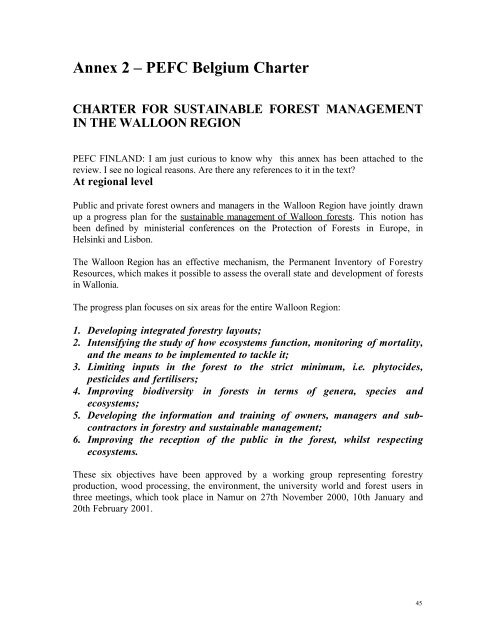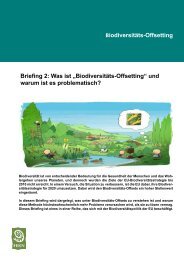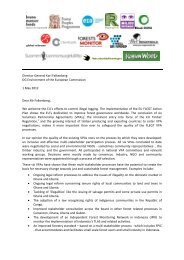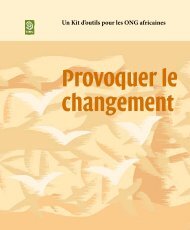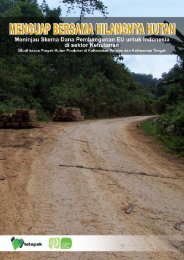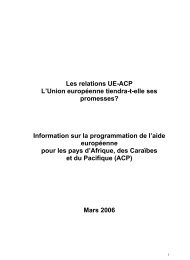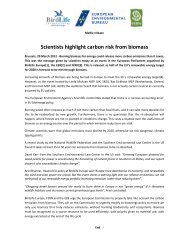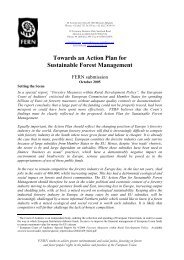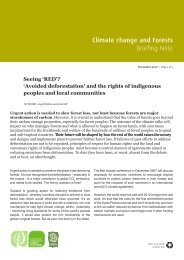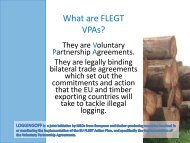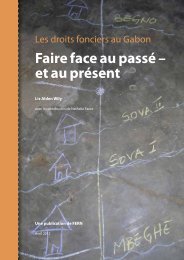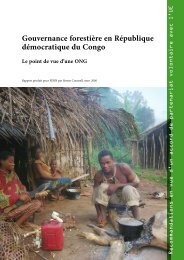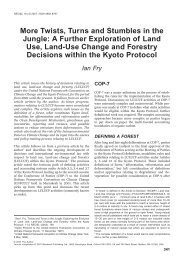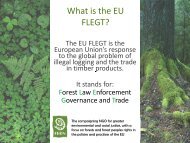Footprints in the forest - Fern
Footprints in the forest - Fern
Footprints in the forest - Fern
Create successful ePaper yourself
Turn your PDF publications into a flip-book with our unique Google optimized e-Paper software.
Annex 2 – PEFC Belgium Charter<br />
CHARTER FOR SUSTAINABLE FOREST MANAGEMENT<br />
IN THE WALLOON REGION<br />
PEFC FINLAND: I am just curious to know why this annex has been attached to <strong>the</strong><br />
review. I see no logical reasons. Are <strong>the</strong>re any references to it <strong>in</strong> <strong>the</strong> text?<br />
At regional level<br />
Public and private <strong>forest</strong> owners and managers <strong>in</strong> <strong>the</strong> Walloon Region have jo<strong>in</strong>tly drawn<br />
up a progress plan for <strong>the</strong> susta<strong>in</strong>able management of Walloon <strong>forest</strong>s. This notion has<br />
been def<strong>in</strong>ed by m<strong>in</strong>isterial conferences on <strong>the</strong> Protection of Forests <strong>in</strong> Europe, <strong>in</strong><br />
Hels<strong>in</strong>ki and Lisbon.<br />
The Walloon Region has an effective mechanism, <strong>the</strong> Permanent Inventory of Forestry<br />
Resources, which makes it possible to assess <strong>the</strong> overall state and development of <strong>forest</strong>s<br />
<strong>in</strong> Wallonia.<br />
The progress plan focuses on six areas for <strong>the</strong> entire Walloon Region:<br />
1. Develop<strong>in</strong>g <strong>in</strong>tegrated <strong>forest</strong>ry layouts;<br />
2. Intensify<strong>in</strong>g <strong>the</strong> study of how ecosystems function, monitor<strong>in</strong>g of mortality,<br />
and <strong>the</strong> means to be implemented to tackle it;<br />
3. Limit<strong>in</strong>g <strong>in</strong>puts <strong>in</strong> <strong>the</strong> <strong>forest</strong> to <strong>the</strong> strict m<strong>in</strong>imum, i.e. phytocides,<br />
pesticides and fertilisers;<br />
4. Improv<strong>in</strong>g biodiversity <strong>in</strong> <strong>forest</strong>s <strong>in</strong> terms of genera, species and<br />
ecosystems;<br />
5. Develop<strong>in</strong>g <strong>the</strong> <strong>in</strong>formation and tra<strong>in</strong><strong>in</strong>g of owners, managers and subcontractors<br />
<strong>in</strong> <strong>forest</strong>ry and susta<strong>in</strong>able management;<br />
6. Improv<strong>in</strong>g <strong>the</strong> reception of <strong>the</strong> public <strong>in</strong> <strong>the</strong> <strong>forest</strong>, whilst respect<strong>in</strong>g<br />
ecosystems.<br />
These six objectives have been approved by a work<strong>in</strong>g group represent<strong>in</strong>g <strong>forest</strong>ry<br />
production, wood process<strong>in</strong>g, <strong>the</strong> environment, <strong>the</strong> university world and <strong>forest</strong> users <strong>in</strong><br />
three meet<strong>in</strong>gs, which took place <strong>in</strong> Namur on 27th November 2000, 10th January and<br />
20th February 2001.<br />
45


